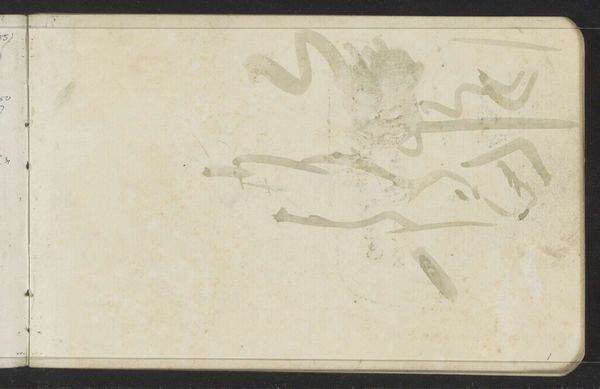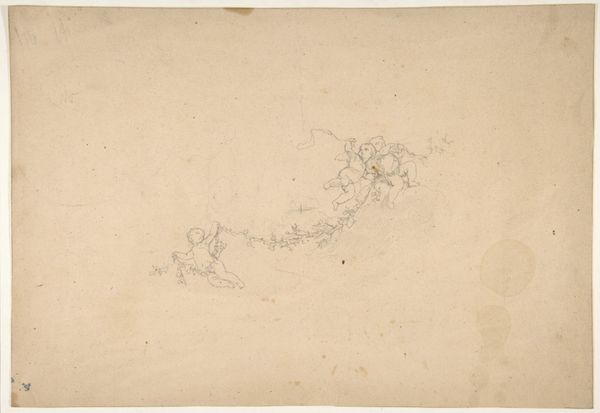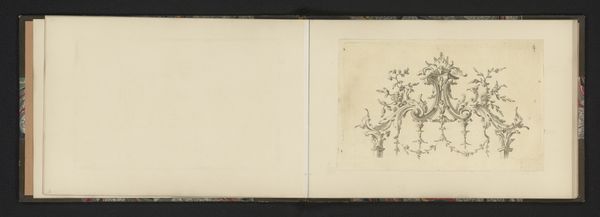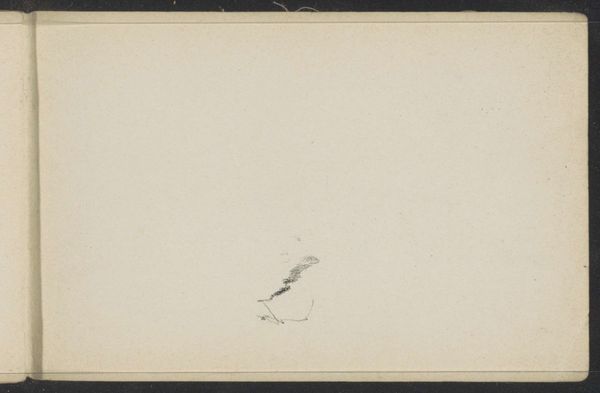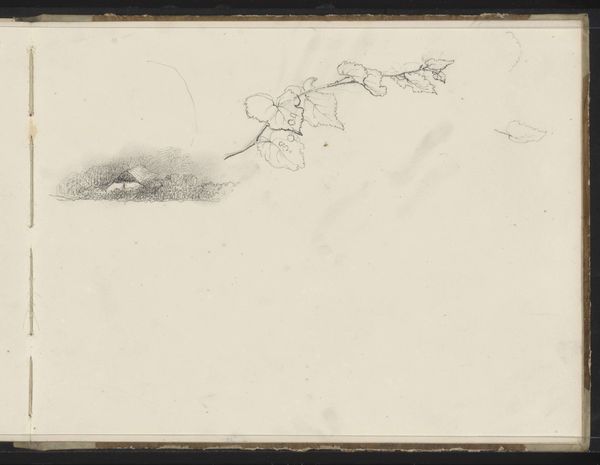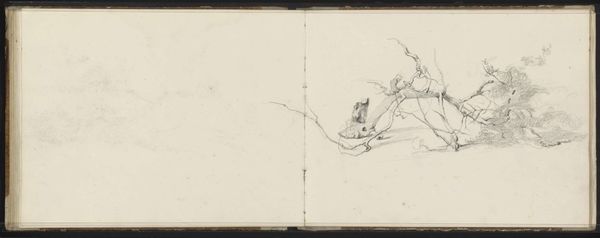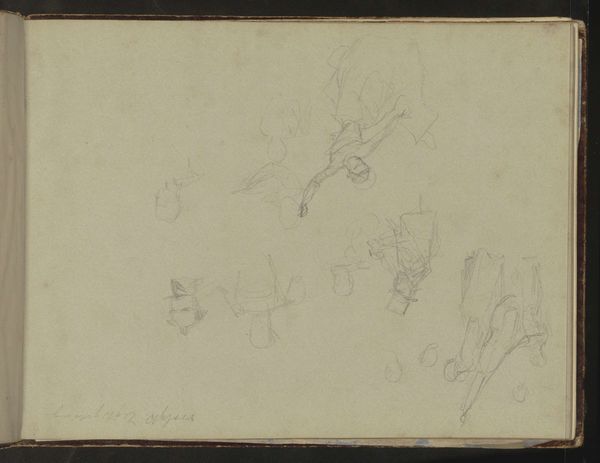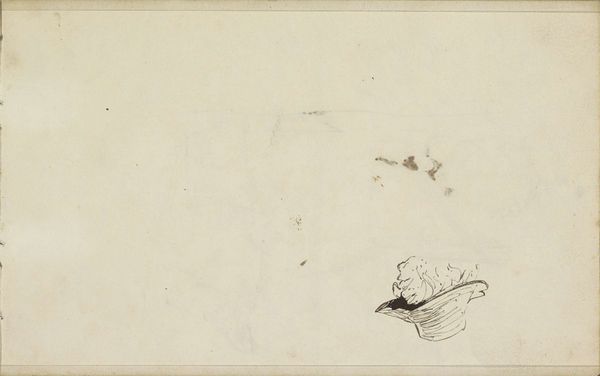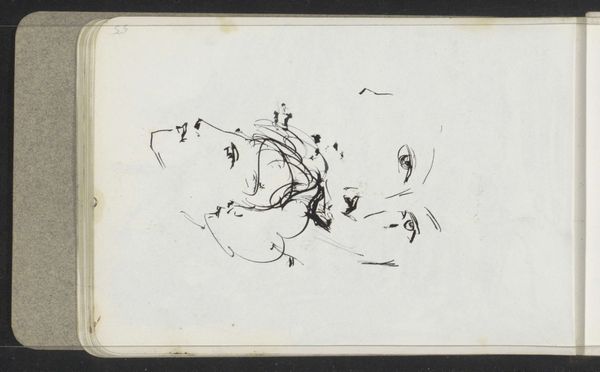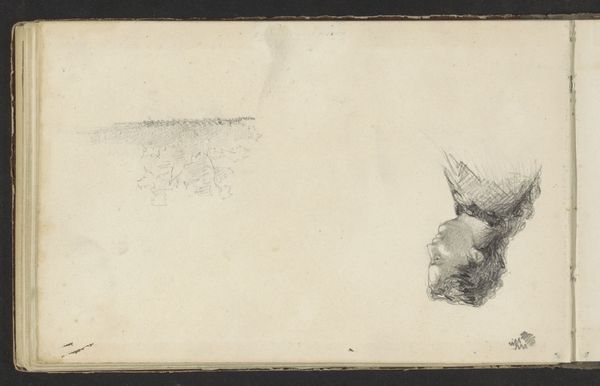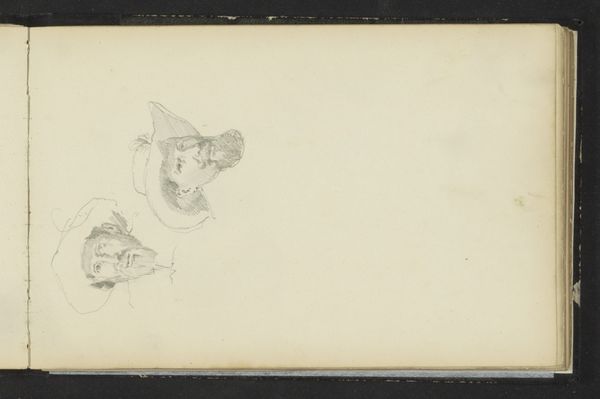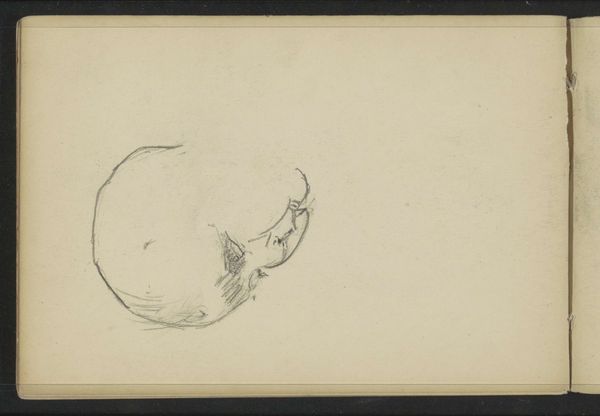
drawing, paper, ink, pencil
#
drawing
#
animal
#
sketch book
#
landscape
#
figuration
#
paper
#
ink
#
pencil
#
horse
Copyright: Rijks Museum: Open Domain
Editor: This is "Paard," a pencil and ink drawing of a horse, dating from around 1860 to 1866, by Cornelis Springer. It looks like a study from a sketchbook. The lines are so sparse, it almost feels like the essence of a horse rather than a horse itself. What catches your eye in terms of its composition and form? Curator: The immediate impression lies in the economical use of line. Note how Springer delineates the horse's form with minimal strokes, focusing instead on suggesting mass and movement. Observe how the positioning of the two incomplete figures within the pictorial plane creates a sense of depth, almost an echo of the subject. The varying line weights imply a conscious effort to modulate light and shadow, wouldn’t you agree? Editor: Yes, definitely, especially around what looks like the horse’s shoulder and legs. So, the empty space isn’t just emptiness, but actively contributes to the drawing’s meaning? Curator: Precisely. It emphasizes the ephemeral nature of the sketch itself. Think of it as a study of pure form. The lack of background or surrounding context shifts the emphasis solely onto the horse, prompting us to analyze its structure and pose in isolation. What is your impression of the use of space itself? Editor: I see your point. It's less about the actual horse and more about the artist capturing the *idea* of a horse, or its energy, very quickly. Almost like notation. Curator: Indeed. This allows us to focus on the fundamental aspects of representation, stripping away extraneous details to reveal the core elements of form and line. The structure guides our eye. This examination of bare fundamentals has offered a glimpse into Springer’s artistic methodology. Editor: That’s such a useful perspective. I was stuck on thinking about what was missing, instead of appreciating what the artist chose to include.
Comments
No comments
Be the first to comment and join the conversation on the ultimate creative platform.

